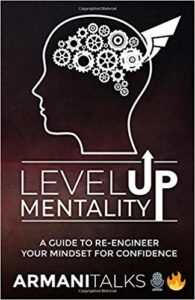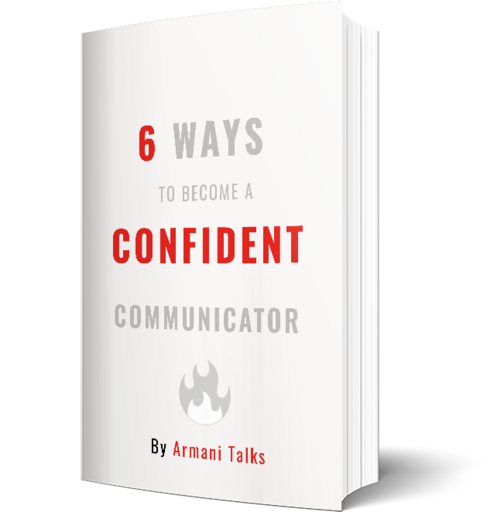What Are Cliffhangers? | Storytelling 101
Cliffhangers are untold parts of stories that make the audience want to tune back in.
Which shows do you think had a lot of cliffhangers?
For me, it was Game of Thrones.
That show had so many moments that made me think:
‘Dang, I was going to wrap it up for the night… But I guess one more episode won’t hurt.’
That’s what cliffhangers are meant to do.
It’s meant to make us tune into the next episode, next chapter, or next scene.
How can you use cliffhangers in your stories?
Why Cliffhangers Are Used
The reason that cliffhangers are used for certain stories is because of incentives.
If the storyteller shares everything they need to share, then the audience has no desire to tune in for the next episode.
We want to activate the psychological principle known as the “law of closure.”
If I hold my 2 index fingers an inch across from each other, your mind is going to want to make my index fingers touch.
That one-inch gap is very bothersome!
Similar to storytelling.
If I say something like:
‘Bro, you won’t believe what happened to Susie.’
And you are close to Susie.
You want to know.
When I don’t tell you, you will feel a strong desire to CLOSE the gap in the missing information.
This is a case of us:
- Creating a problem.
- Possibly providing a solution.
Keyword, possibly.
When Are We Going to Provide the Solution?
The storyteller dictates the pace.
Let’s say episode 3 ended with a cliffhanger.
Episode 4 does not have to automatically share the solution.
It’ll be cool if it does.
But the storyteller can drag on the suspense some more.
When we leave the audience in a state of confusion, they surprisingly get more invested.
We don’t want to drag it on for too long though.
Then the audience will lose interest.
I believe that’s what happened with the Walking Dead TV series.
When there were so many cliffhangers, I eventually thought:
‘How long are there going to be zombies? What’s the next step?’
When you leave the audience in a state of confusion for too long, they’ll resent you.
Eventually, they’ll think that you don’t have anything to share.
Or your cliffhanger isn’t worth the wait.
Great storytellers have great timing.
They know not to reveal their hand too soon.
Also, they don’t prolong secrecy for too long either.
How to Get Better at Telling Cliffhangers
I have a fun exercise to get better at cliffhangers through gossip.
You want to get the coveted, “Come on, you began the story and you’re not going to finish it??”, from your conversation partner.
I used to do this to my friends a lot.
I’d begin by sharing a story.
Then I’d abruptly say:
‘Actually, I can’t tell you anything else.’
They’d be like:
‘No, come on! You already began. Just tell me.’
Then I’d say:
‘No, I already said too much. Forget it.’
I saw their irritation.
They had a desire to know.
They wanted to close the gap in the missing information.
I was giving them a cliffhanger.
If you do this, then you’ll understand the cliffhanger principle.
You probably did this recently and were unaware that you were doing a storytelling trick.
How was it?
Did anyone ever do that to you?
Where they began telling you some gossip, then abruptly stopped?
If so, analyze how you felt.
The more you understand the power of withholding information, the more you understand cliffhangers.
Analyze Cliffhangers
The best cliffhangers are done in suspense shows.
Analyze these shows and movies.
Why are they setting things up the way that they are?
Another way to understand cliffhangers is to read children’s horror books.
Goosebumps is a good example.
Children have low attention spans.
So, the author needs to try to hook their concentration throughout the piece.
During their writing, the author will introduce frequent cliffhangers.
A lot of the cliffhangers will be decoys.
Where the end of chapter 5 will make it seem like the main character is about to get attacked by a monster.
Then chapter 6 begins with how the attacker wasn’t a monster.
It was just the main character’s friend who was wearing a mask.
This is a decoy cliffhanger.
It was meant to throw us off.
See how kids’ books create cliffhangers.
See how movies and shows introduce cliffhangers.
Can you spot the difference between decoys and the real ones?
How do you feel when you know there is a gap in your understanding?
I don’t know about you, but I hate feeling confused.
I want to know.
The desire to know makes me more invested in the story.
Sharing Cliffhangers in Your Stories
When you see someone is invested in your story, every now and then, you want to temporarily stop.
Which is hard!!
Humans love to ramble.
They find it difficult to cut themselves off early.
Do it though!
Exercise the muscle to cut yourself off by saying:
‘I have to get going, but I’ll tell you the really interesting part when I’m out of my meeting.’
During that moment, you are creating a weekly break like a lot of shows do.
However, it won’t be a real week.
If you were sharing your story to your coworker in the morning, and plan to tell them the remainder of the story in the afternoon….
That’s only a few hours.
But in the storytelling world, it feels like a week!
Especially if your coworker is really invested.
The more invested someone is in our story, the more they want to know the conclusion.
Every second we withhold the conclusion, every second they are in a state of confusion.
They want to bridge the gap.
Learning to withhold is just as important as learning to share.
If the storyteller understands the line above, they understand the concept of cliffhangers.
For more strategies to master your storytelling skills, check out the Art & Science of Storytelling Book
✨Ebook
✨Paperback/Kindle
✨Audiobook
– ArmaniTalks 





